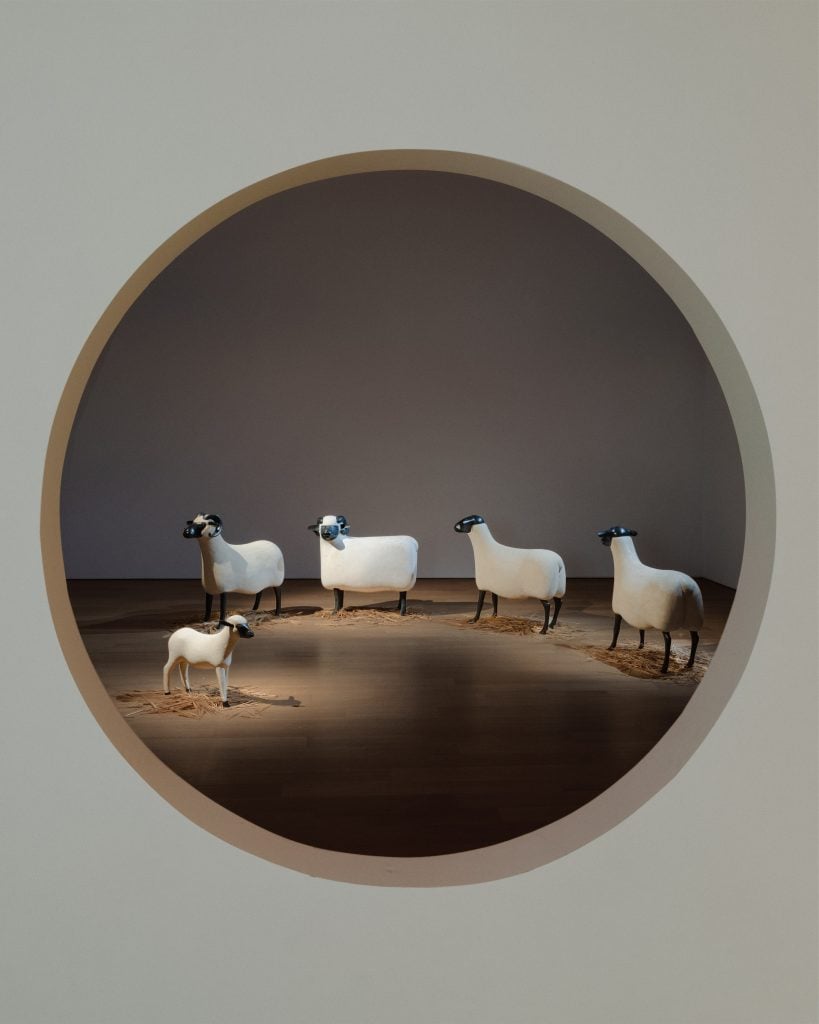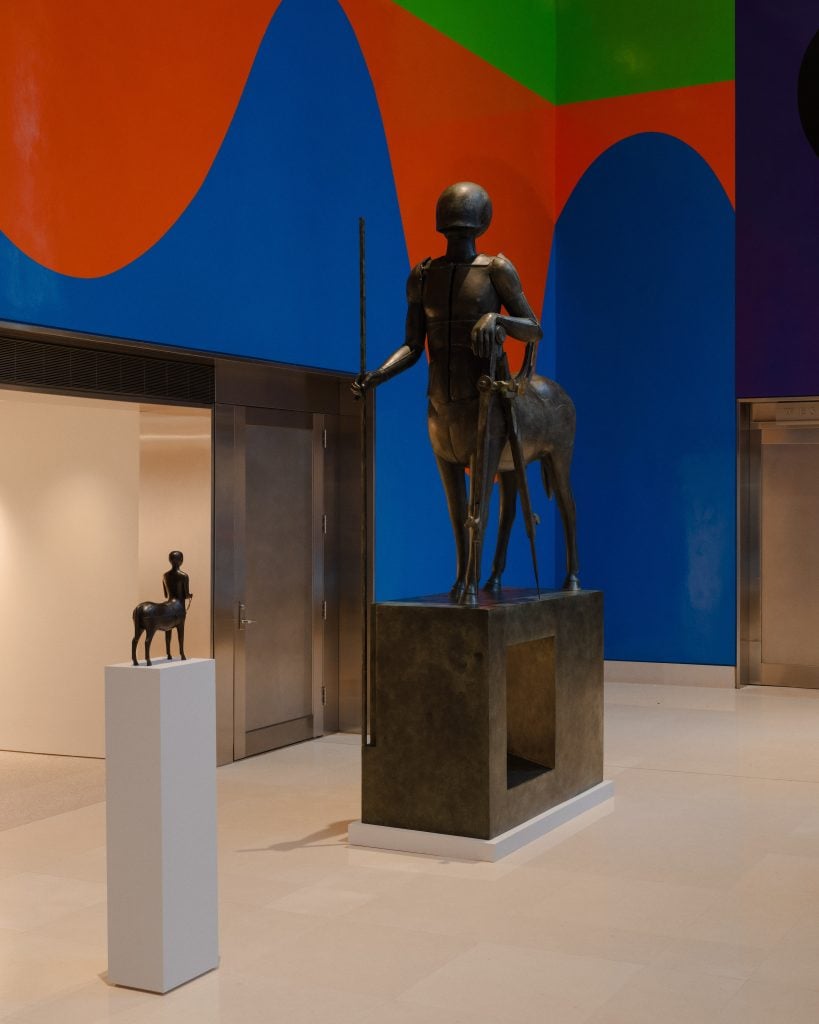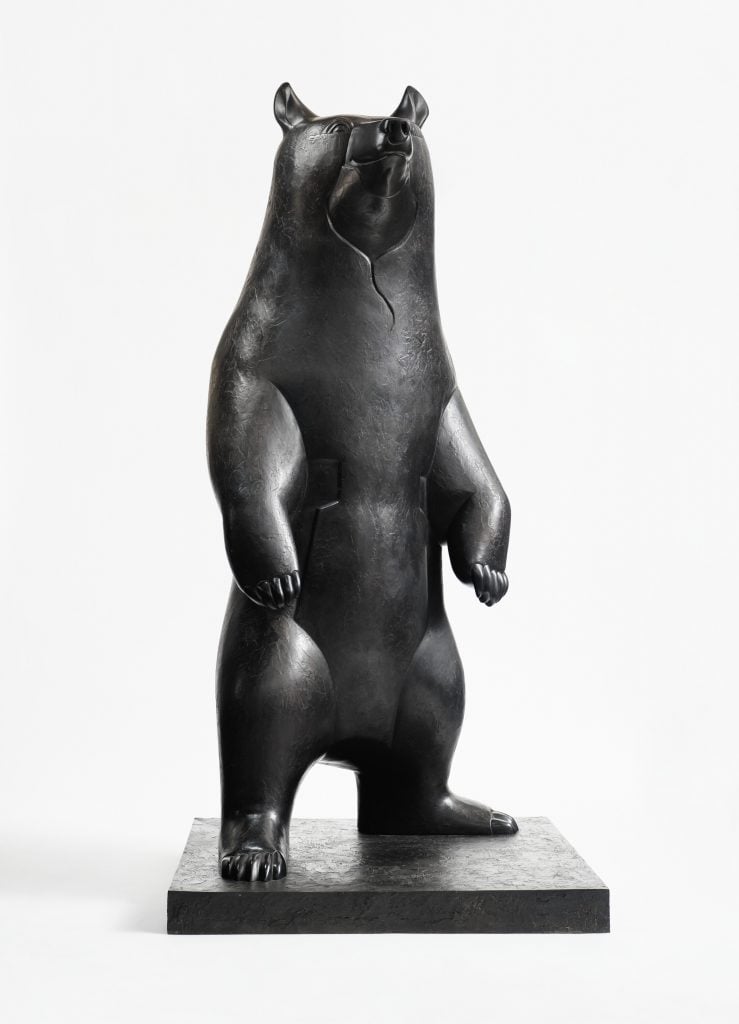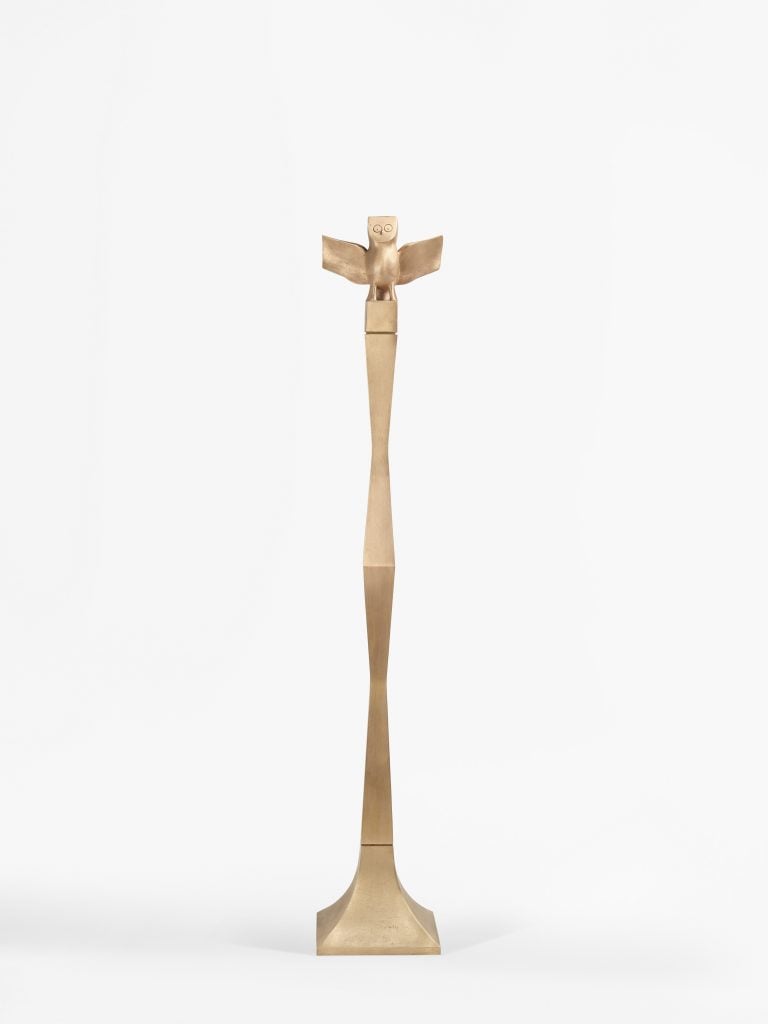Auctions
Lalanne Sculptures Make a Clean Sweep at Auction, Netting $59 Million
The stampede for the animal sculptures smashed a handful of auction records.

The first auction solely dedicated to the work of playful sculptor François Xavier Lalanne has proved a strong success netting $58.9 million at a Christie’s sale in New York on October 10.
The sale arrived courtesy of the daughter, Dorothée Lalanne, who put forward 70 animal sculptures—some giant and towering, others small enough to slip into a handbag. All of the works sold with 97 percent of the lots surpassing their high estimates.
The leading lot was Tres Grand Centaure (2001), an 11-foot creature that had loomed over the entrance to the Rockefeller Plaza galleries in anticipation of the auction. It sold for $7.5 million, well above its high estimate of $1.2 million, though the record remains $9.6 paid for Léopard I (2001) in 2021.

Lalanne’s Tres Grand Centaure standing at the entrance to Christie’s New York ahead of the auction. Photo: Christie’s.
Tres Grand Ours (2009), a sleek upright bear with an almost human posture, sold for $6.1 million, double its high estimate and setting a record for the model. Lapin à Vent de Tourtour (2002), a dark bronze beast that crosses elements of bird, sheep, and rabbit went for $2.9 million. Oiseleur II (2003), a boyish bronze bird-catcher who was making his first appearance at auction, doubled its estimate to sell for a record-smashing $1.5 million.

François Xavier Lalanne, Tres Grand Ours (2009). Photo: Christie’s.
“[It’s] an extraordinary collection of works by the legendary François-Xavier Lalanne,” said Alex Heminway, international head of design at Christie’s. “The excitement in build-up to the sale was mirrored by our clients’ enthusiasm, and the results were everything we hoped for and more.” In a statement, Christie’s noted 54 percent of the auction’s participants came from the Americas, 15 percent from Asia Pacific, and 31 percent from Europe.
In the run-up to the auction, Dorothée Lalanne had collaborated with French fashion designer Simon Porte Jacquemus on a six-day exhibition that was spread across the ground floor galleries. Lalanne is celebrated for fusing the worlds of fine art and high-end design in sculptural works that boast a utilitarian function and the show celebrated this legacy.

François Xavier Lalanne, Grand Génie de Bellerive (2009). Photo: Christie’s.
Next to a sturdy French farm table at which we imagined the artist might have worked stood Âne de Nathalie (2005), a donkey whose side opens out into a desk. The main gallery became a wheat field across which Jacquemus distributed goats that serve as benches, a tortoise whose back was starred with cactus plants, and wader birds whose breast come aglow as lamps. In a neighboring room was a collection of Lalanne’s animals raised on plinths, notably his Génie de Bellerive sculpture which arrive in grand and petit varieties and are tributes to his friends Constantin Brancusi and Max Ernst. Curiously, Petit Génie de Bellerive outsold Grand Génie de Bellerive by more than $100,000.
Ahead of the show, Dorothée Lalanne described her father as working “in a way that appeared casual but in fact was very rigorous, thoughtful, and elegant. Yet, he always maintained a sense of humor.”





